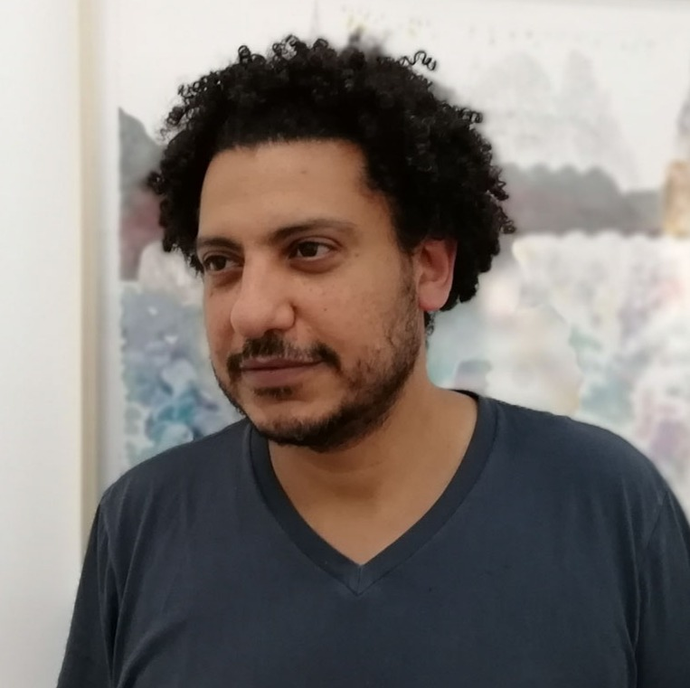
Wael Shawky
Wael Shawky is an Egyptian artist known for his innovative and thought-provoking work in various forms of visual and performance art. Wael Shawky's artistic journey is deeply rooted in his research and explorations within his homeland. His portfolio encompasses numerous artistic methods and mediums, from drawing to sculpture, but his primary vehicles of expression are film, performance, and storytelling.
Biography of Wael Shawky
Wael Shawky, a native of Alexandria, Egypt, embarked on his artistic journey with a foundation in education from the University of Alexandria. He later pursued his Master of Fine Arts (MFA) degree at the University of Pennsylvania in Philadelphia, United States.
In 2010, Shawky introduced "MASS Alexandria," an innovative and pioneering independent studio program aimed at nurturing young artists in Alexandria, Egypt.
One of his notable contributions to the art world occurred in 2013 when he created a live performance piece as part of his "Dictums" series for the Sharjah Biennial. In this performance, 30 workers, primarily of Pakistani descent, came together to sing a qawwali, a form of Sufi devotional music.
In 2017, Wael Shawky unveiled his latest project, "Song of Roland: The Arabic Version," during the opening of Theater der Welt 2017 in Hamburg, Germany. This grand musical and theatrical installation skillfully translated the epic French verse "La Chanson de Roland" into classical Arabic and featured mesmerizing performances by 25 fidjeri singers.
Shawky's artistic prowess has been widely acknowledged with several awards and honors. In 2011, he was honored with the Ernst Schering Foundation Art Award. Furthermore, he received the inaugural Mario Merz Prize in 2015 for his remarkable film trilogy, Al Araba Al Madfuna.
His influential works have found a permanent home in the collections of prestigious museums, including the Tate Modern, MoMA, MACRO, Mart, The Met, and APT Dubai, highlighting his enduring impact on the art world.
Wael Shawky's Art Style
Wael Shawky's art style is a harmonious fusion of traditional Arabic culture and contemporary imagery. He masterfully juxtaposes these elements while keeping a keen eye on current events, resulting in a fresh and thought-provoking reinterpretation of the cultural, religious, and artistic aspects of Middle Eastern history. Through his work, he gives birth to alternate and fantastical realities, flourishing within the realms of imagination.
One of Shawky's most celebrated and emblematic works is his film trilogy, "Cabaret Crusades," consisting of "The Horror Show File" (2010), "The Path to Cairo" (2012), and "The Secrets of Karbala" (2015). In this extraordinary series, ancient puppets and marionettes take on the leading roles in a whimsical retelling of the historical medieval crusades, as recounted by the artist through the perspective of the Arab world and the lighthearted charm of a children's fable.
Titled "I Am Hymns of the New Temples," this exhibition derives its name from the artist's latest film. Within this cinematic creation, an ancient city, entombed beneath the Vesuvius volcano's ashes and resurrected centuries later, emerges as a symbol of death and rebirth. Shawky perceives it as a place steeped in myth and ritual, preserving the layered history of various cultures that resonate with one another. It serves as a testament to the diverse narratives of history, their evolving conceptions, recordings, and dissemination, both within and beyond the Mediterranean region.
In the film, the archaeological site of Pompeii takes center stage, transforming into an open-air theater of the past, where Greco-Roman temples coexist with those dedicated to Egyptian deities. Shawky ingeniously weaves a narrative that blurs the boundaries between fable, reality, and fiction.
In a captivating dance of mystery, gods and goddesses, men and women, along with animals, reenact the slow, conflict-ridden process through which the world has sought to establish equilibrium amid wars, strife, and natural catastrophes. This pattern, endlessly repeated, mirrors the enduring cycle of humanity's demise and rebirth, resonating through history, both past and present.
In addition to these mask-like sculptures made from glass and ceramics, the exhibition features anthropomorphic amphorae, bas-reliefs, paintings, and drawings that craft a mystical and prophetic setting. These works seamlessly blend historical, mythological, and literary references, presenting the artist's imaginative reinterpretation of the world's history.
Years:
Born in 1971
Country:
Egypt, Alexandria